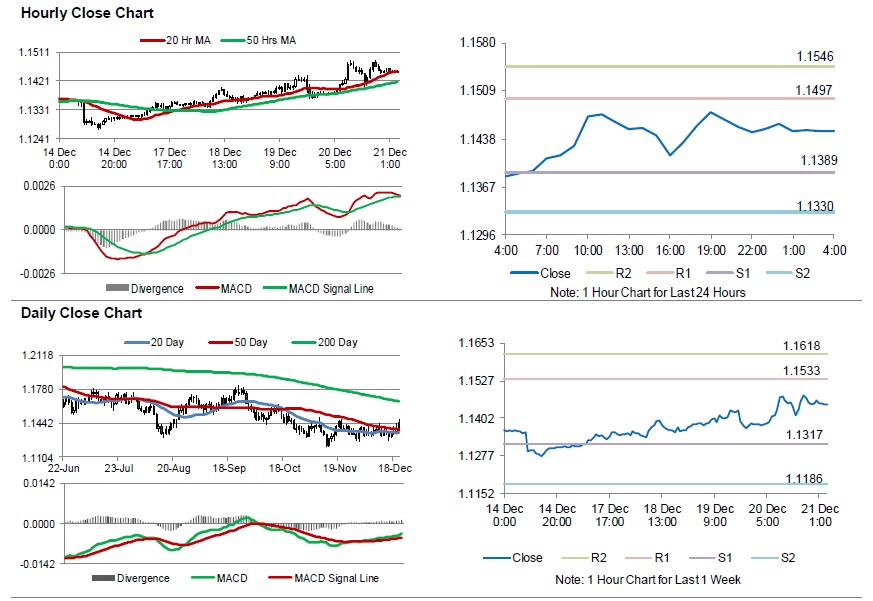For the 24 hours to 23:00 GMT, the EUR rose 0.61% against the USD and closed at 1.1453.
On the data front, the Euro-zone’s seasonally adjusted current account surplus widened to €23.0 billion in October, following a revised surplus of €17.6 billion in the prior month.
In the US, data showed that the US Philadelphia Fed manufacturing index unexpectedly declined to a level of 9.4 in December, defying market consensus for a rise to a level of 15.0. The index had recorded a reading of 12.9 in the previous month.
On the contrary, the nation’s leading indicator surprisingly rebounded 0.2% on a monthly basis in November, cofounding market expectations for a flat reading. In the preceding month, the leading indicator had recorded a revised fall of 0.3%. Moreover, the number of Americans filling for fresh unemployment benefits rose to a level of 214.0K in the week ended 15 December 2018, compared to a reading of 206.0K in the previous week. Market participants had anticipated initial jobless claims to climb to a level of 215.0K.
In the Asian session, at GMT0400, the pair is trading at 1.1449, with the EUR trading a tad lower against the USD from yesterday’s close.
The pair is expected to find support at 1.1389, and a fall through could take it to the next support level of 1.1330. The pair is expected to find its first resistance at 1.1497, and a rise through could take it to the next resistance level of 1.1546.
Moving ahead, investors would keep an eye on the Germany’s GFK consumer confidence for January, slated to release in a while. Later in the day, the US 3Q annualised gross domestic product along with the Michigan consumer sentiment index for December and durable goods orders for November, will keep investors on their toes. Also, the US personal spending and personal income data for November, will pique significant amount of traders attention.
The currency pair is showing convergence with its 20 Hr moving average and trading above its 50 Hr moving average.

